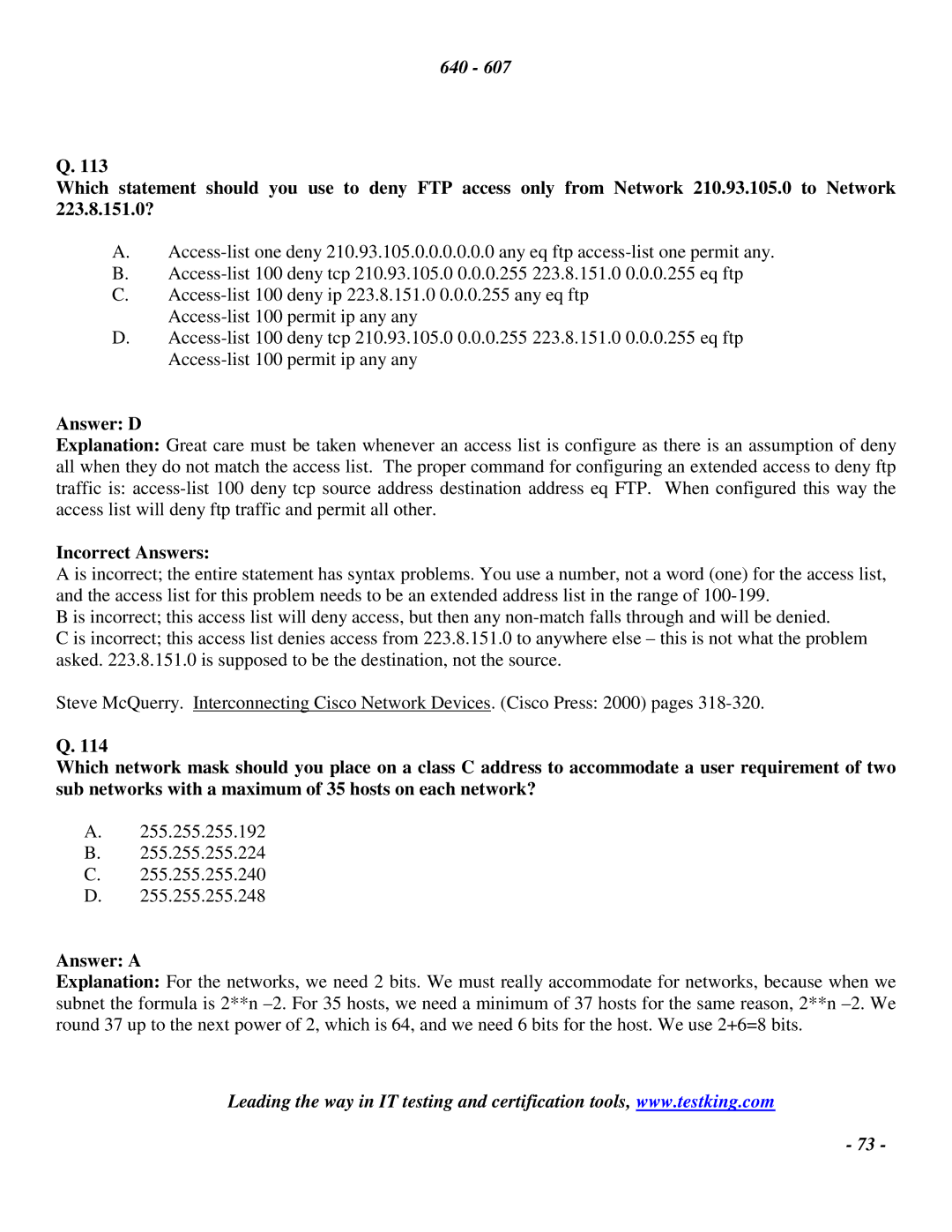640 - 607
Q. 113
Which statement should you use to deny FTP access only from Network 210.93.105.0 to Network 223.8.151.0?
A.
B.
C.
D.
Answer: D
Explanation: Great care must be taken whenever an access list is configure as there is an assumption of deny all when they do not match the access list. The proper command for configuring an extended access to deny ftp traffic is:
Incorrect Answers:
A is incorrect; the entire statement has syntax problems. You use a number, not a word (one) for the access list, and the access list for this problem needs to be an extended address list in the range of
B is incorrect; this access list will deny access, but then any
C is incorrect; this access list denies access from 223.8.151.0 to anywhere else – this is not what the problem asked. 223.8.151.0 is supposed to be the destination, not the source.
Steve McQuerry. Interconnecting Cisco Network Devices. (Cisco Press: 2000) pages
Q. 114
Which network mask should you place on a class C address to accommodate a user requirement of two sub networks with a maximum of 35 hosts on each network?
A.255.255.255.192
B.255.255.255.224
C.255.255.255.240
D.255.255.255.248
Answer: A
Explanation: For the networks, we need 2 bits. We must really accommodate for networks, because when we subnet the formula is 2**n
Leading the way in IT testing and certification tools, www.testking.com
- 73 -
